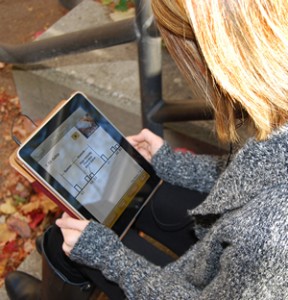The traditional list of necessities for college includes textbooks, pens, a computer and any required software, notebooks, a backpack and pens. Add games to that list, and you’ll be part of a growing trend. Educational gaming is on the rise, and many experts believe that it has the potential to help you learn better from preschool through preparation for higher education. Learn a little bit about the history of games in education and you may decide that you or your children should invest in them.
Gaming in Education
Games have many characteristics that educational innovators can take advantage of as they design educational games. These characteristics, in theory, can aid learning.
• Progression: Games challenge players to improve their skills with higher levels.
• Competition: Many people innately want to be the be the best at whatever it is that they are doing, even if no tangible reward is likely. Games usually involve nothing besides points. Educational games can take advantage of the drive to be the best because students will continue to play games and improve their academic skills as they do so.
• Accountability: Educational games can integrate a sense of achievement when work is completed successfully and the pride in effort. Collaboration with remote team members or competitors requires players to monitor their time.
• Novelty: Education is about learning new concepts; educational games can teach those concepts and how to apply them. Games also foster creativity when they involve multiple players that communicate with each other to develop solutions.
• Empathy: Games, such as role-playing games, can help students learn different points of view.
The History of Games in Education
Educational games have been around for about as long as personal computers.
• 1980s: Car
• 1990s: SimCity and other virtual world games were engaging developments. The introduction of the handheld console and web-based devices opened up new mobile worlds of gaming.
• 2000s: Multiplayer, complex games could teach people more advanced educational concepts. Smartphone apps let educational gaming occur anytime, anywhere, without interruption.
• And beyond: Course curricula in grade school and colleges may see gaming as a permanent component.
The Gaming Generation
Today’s children and adolescents have grown up with computers, wi-fi and smartphones. They are used to unlimited information, the ability to communicate with their friends and family instantly and the ability to multitask. This generation may respond better to educational games than to textbooks, chalkboard lectures or other traditional learning methods, which may seem slow or boring. This generation may be less able to concentrate on one task at once, but is excellent at adapting to innovations. Gaming helps improve digital skills.
Educational games are available for all grade levels. Preschoolers can learn counting, shape and colors and grade school students can learn basic math, scientific facts, history and vocabulary. Gaming may have a place preparation for higher education, too. Most colleges include digital technologies in their classrooms. If you’re considering an online program, gaming can be a fun and effective choice for getting up to speed on your digital learning skills.
Potential Benefits for Higher Education
Hopefully, this introduction to educational gaming has persuaded you to explore your options and make your own decisions about whether gaming can benefit you. You may be able to convince your parents that you need games to help you become a successful student. If you’re out of touch with digital technology but are considering continuing your education, gaming can be an opportunity to improve your skills, especially in preparation for an online program.

